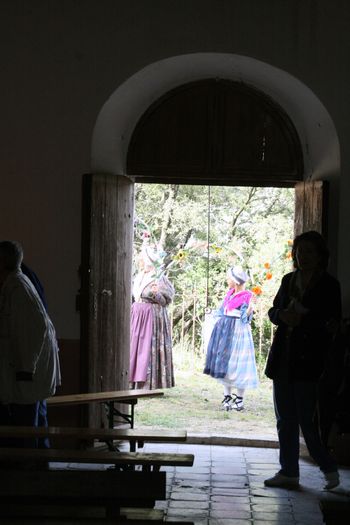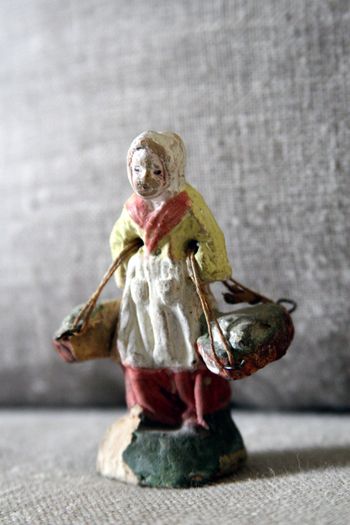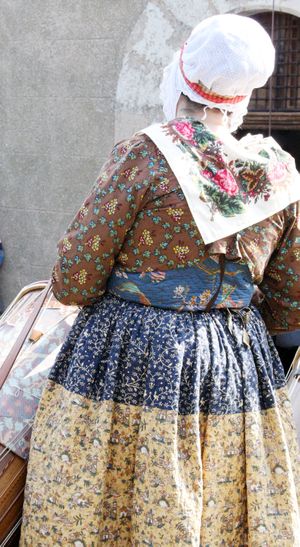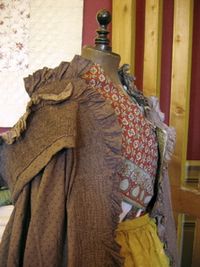The French village where I live started nearly two thousand years ago deep within the Provencal foothills. Over a thousand years ago it was destroyed by a fire. Trails, stone walls, a church, and traces of another life still remain if you are willing to hike up Saint Baume to see it.
The trail leading up to the old village ruins is rocky. What impressed me the most is the stone steps that are still intact. Along the path you can find wild irises, savaged snapdragons and the classic mix of herbs of Provence: Thyme, rosemary, lavender… it is a perfumed trail that carries you along.
For years the town has had an annual picnic the day after Easter by the old village ruins.
A procession leads the way up the hill, with a group playing traditional Provencal music with Provencal instruments, and dressed in traditional Provencal costumes.
There is a BBQ, and organized games for the children.
A morning mass is held in the small chapel that overlooks the "new" village (1200 years old is considered new.)
The traditional quilted skirts are called "jupon".
Hand crocheted socks were worn back then. Knitted ones where consider functional, everyday wear. Crocheted socks were for feast days, or worn when you were going out.
Imagine hiking up the hill in those shoes.
A picnic basket… it is more attractive than a brightly colored backpack… but not as practical when you have to carry it up the hill.
A traditional Provencal cape. Note: The pleated hood, which was worn over the lace cap.
Antique Provencal textiles can be found at the antique shops and brocantes in France. Typical colors in Provence include yellow, blue, orange, brown, red…
An antique French santon (A character in the French nativity scene at Christmas.) depicts the attire of a typical 18th-century woman. Note: The baskets for carrying vegetables.
French antique quilts using Provencal fabric.
The "Jupons" were made the same way as a quilt was made, but not as thick. In the winter the jupons were batted with wool, and in the summer they were batted with cotton.
French women know how to tie a scarf because they have a long history of doing so.
The French Provencal scarves were pleated and pinned in the back, and then tied in the front with a simple knot.






Leave a Reply